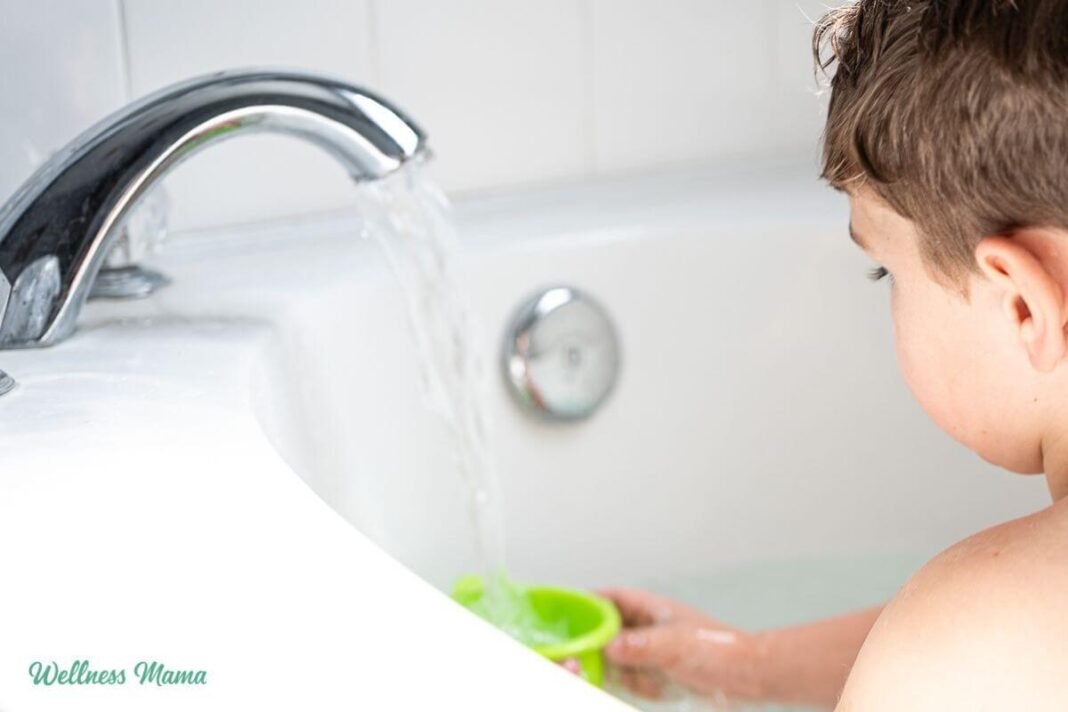Taking a long, relaxing bath is a cherished ritual for many. The warm water, calming atmosphere, and soothing scents provide a much-needed escape from the daily grind. But did you know that your bath water might be filled with hidden chemicals that can affect your skin, health, and the environment? Fortunately, there are steps you can take to reduce or eliminate these toxins, ensuring that your bath time is as healthy and clean as possible.
In this article, we’ll explore the common chemicals lurking in your bath water, why they matter, and how to protect yourself and your family from potential harm. Plus, we’ll provide practical, natural alternatives that can turn your bath into a safe, rejuvenating experience.
The Hidden Chemicals in Your Bath Water
When you run a bath, the water that fills your tub is not just H2O; it’s a cocktail of substances that may have been added by your local water treatment plant. While public water systems treat water to make it safe for consumption, they often leave behind chemical residues that may not be ideal for long-term exposure.
Some common chemicals found in bath water include:
- Chlorine and Chloramine: Chlorine is commonly used to disinfect water, while chloramine (a compound made from chlorine and ammonia) is also increasingly used in many municipalities. Both are harsh chemicals that can irritate the skin, eyes, and respiratory system. Chlorine, in particular, can strip the skin of its natural oils, leading to dryness and irritation.
- Fluoride: While fluoride is added to drinking water for dental health, it can also have adverse effects when absorbed through the skin, especially with long-term exposure. Some studies suggest that fluoride may have links to certain health conditions, although the evidence is still debated.
- Heavy Metals: Trace amounts of heavy metals, such as lead, mercury, and cadmium, can sometimes be found in tap water due to old pipes or environmental contamination. These metals can be toxic when absorbed through the skin over time.
- Pesticides and Pharmaceuticals: Residual pesticides, herbicides, and pharmaceutical drugs (such as hormones or antibiotics) can sometimes end up in the water supply. Even though the concentrations may be small, long-term exposure to these substances can have negative health effects.
While the levels of these chemicals in your bath water may be low, regular exposure can build up over time, potentially affecting your skin, immune system, and overall well-being. Fortunately, there are easy, natural solutions to minimize these risks.
Steps to Reduce Chemicals in Your Bath Water
Here are a few strategies to help you reduce the exposure to harmful chemicals in your bath water:
1. Install a Water Filter
One of the most effective ways to reduce chemicals in your bath water is to install a water filter. Shower and bath filters are widely available and can remove chlorine, chloramine, and some heavy metals from your water. Depending on the type of filter, it may also help reduce fluoride and other contaminants.
- Activated Carbon Filters: These are the most common type of water filters and are great for removing chlorine and chloramine. They work by adsorbing the chemicals onto the carbon surface, preventing them from reaching your skin.
- Vitamin C Filters: Some filters use vitamin C (ascorbic acid) to neutralize chlorine and chloramine. These filters are a great option for sensitive skin because they help balance the pH of the water and leave it feeling softer.
- Reverse Osmosis Systems: Reverse osmosis is a more advanced filtration system that can remove a wide range of contaminants, including heavy metals and fluoride. While these systems are often used for drinking water, some can be installed for whole-house or bath use.
2. Use a Shower Filter for Your Bath Water
If installing a full-home water filter isn’t an option, you can opt for a shower filter that attaches to your showerhead. While it won’t directly filter your bath water, it will reduce the chemicals in the water coming from your shower. Simply run your bathwater from the shower to avoid exposure to chlorine and other contaminants.
3. Fill Your Tub with Filtered Water
If you don’t want to install a permanent filter, consider using filtered water in your bath. Many portable water filters are available that allow you to fill your tub with filtered water. While this may not be practical for daily use, it’s a great option for occasional long soaks when you want to make sure the water is as clean as possible.
4. Add Natural Bath Ingredients to Neutralize Toxins
There are several natural substances you can add to your bath that can help neutralize chemicals and improve the quality of your water. Some of these include:
- Baking Soda: Adding a cup of baking soda to your bath can help neutralize chlorine and other harsh chemicals, making the water feel softer and more soothing. It also has gentle exfoliating properties that can help cleanse the skin.
- Apple Cider Vinegar: Apple cider vinegar is known for its ability to balance pH levels. Adding a cup to your bath can help neutralize chlorine and restore moisture to your skin. Plus, it helps detoxify and cleanse your skin.
- Epsom Salt: Epsom salt, rich in magnesium, can help soothe sore muscles, reduce inflammation, and relax the body. It’s a great addition to any bath, especially if you’re looking for extra relaxation and relief.
- Essential Oils: While essential oils won’t filter out chemicals in your water, they can enhance your bath experience. Certain oils, such as lavender or eucalyptus, can help reduce skin irritation, soothe your senses, and create a calming atmosphere.
5. Consider a Detoxifying Bath
If you’re looking for a deeper cleanse, consider creating a detoxifying bath that helps remove toxins from your body. A common method is to add bentonite clay or activated charcoal to your bathwater. These substances have the ability to bind with toxins and heavy metals, helping to draw them out of your body. Just be sure to follow up with a good moisturizing lotion afterward to keep your skin soft.
Conclusion: Making Your Bath Time Healthier
Although it’s impossible to eliminate all contaminants from your bathwater, there are several simple, effective steps you can take to reduce harmful chemicals and create a cleaner, more natural bathing experience. Whether you choose to filter your water, add natural bath ingredients, or go the extra mile with a detoxifying soak, these small changes can make a big difference in your overall health and well-being.
By being mindful of the chemicals in your bath water, you can enjoy the therapeutic benefits of a relaxing bath without worrying about exposure to potentially harmful substances. The next time you fill your tub, take a moment to think about the quality of the water—and take the necessary steps to make your bath time as pure and enjoyable as possible.





